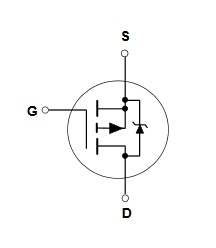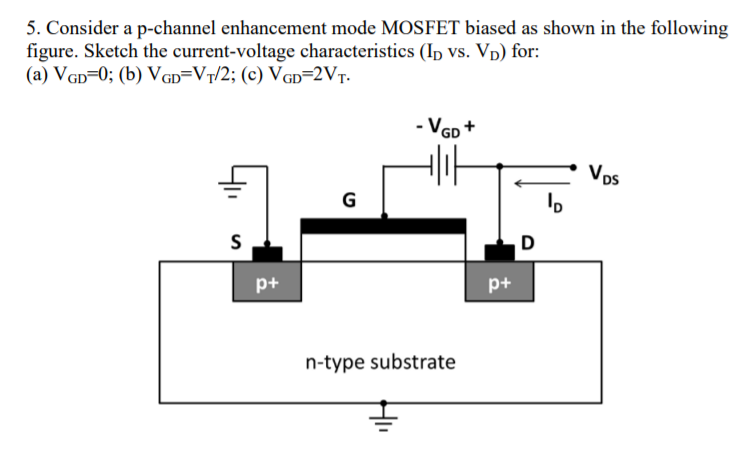P-Channel MOSFET are available at Mouser Electronics. Mouser offers inventory, pricing, & datasheets for P-Channel MOSFET. Analog Devices’ growing portfolio of high-side switches and MOSFET (FET) drivers provides a simple and effective solution to drive single, dual, triple, or quad N-channel or P-channel FETs. Key features include wide input range of operation, extended temperature range of operation, a powerful gate. Apr 07, 2021 MALVERN, Pa., April 07, 2021 (GLOBE NEWSWIRE) - Vishay Intertechnology, Inc. (NYSE: VSH) today introduced the world’s best AEC-Q101 qualified p-channel -80 V TrenchFET ® MOSFET. DIOFET (Diodes Schottky Integrated MOSFET) H-Bridge MOSFETs; IntelliFET; MOSFET Master Table. N-Channel; P-Channel. P-Channel 8V to 29V; P-Channel 30V; P-Channel 31V - 99V; P-Channel ≥ 100V; Complementary Pair (N+P) MOSFET plus SBR; MOSFET plus BJT; Protection Devices; Analog; Power Management; Connectivity & Timing; Logic; Automotive.
Webmaster Homepage and contact information.
Hobby Electronics Homepage.
This tutorial will explore the use of a P-channel and N-channel MOSFETs as a power switch and general transistor theory. This switch will operate on the positive side of a power supply with a negative common. This is for use with 5-volt micro controllers such as Arduino.
Pictured above is the basic electrical connections for Arduino and most modern micro-controllers. We have a negative common and a 5-volt Vcc. That dictates how we connect any driver transistor to the I/O pins. In addition each Arduino I/O pin can source/sink an absolute maximum of 40mA. (Note: operate at 20mA.)

First note that all MOSFETs are voltage operated devices and don't rely on a base current like a bipolar transistor. Download idmss plus for windows. In many cases gate drive voltages below 5-volts won't work without a bipolar transistor switching in a higher voltage.
Update Dec. 2019. Many micro-controllers today are using 3.3-volt Vcc. This is also true of Raspberry Pi. I found two MOSFETs that work at 3.3-volts.
The IRFZ44N is an N-channel device rated at 55V and RDS(on) resistance of 0.032 Ohms max. The other is a P-channel device rated at 55V and a RDS(on) of 0.02 Ohms max.
See the following spec sheets:
Referring to Plate 1 whenever the voltage difference between the gate (G) and source (S) exceeds around 5-volts this opens a conductive channel between source (S) and drain (D) allowing current flow from the source back to the power supply. (Here we are using electron flow from negative to positive.)
This is often known as a series pass configuration.
Looking again at Plate 1 with no input to the base of Q1 the collector voltage rises to Vcc and with no difference in potential across Rgs Q6 and Q8 are turned off.
Applying 5-volts to the base resistors of Q8 and Q6 (plate 1) forward biases their base-emitter junctions allowing a small current flow Ib. Depending on the DC gain (hfe) of the individual transistors the base current is multiplied to produce Ic. The relationship is as follows:
Ie = Ib + Ic; Ib * hfe = Ic.
The base current Ib is determined by Vin - 0.6 / Rb. The 0.6 volts is the voltage drop across the BE junction. Let's say Q1 and Q7 are 2N2222As that have minimum hfe of 90 and we desire an Ic of 20 mA. Here is how this will work:
Now some issues on switching transistors. We want them operating in their saturation mode where any additional base current will produce no increase in collector current (Ic). When making these calculations a transistor spec sheet gives a range for hfe, assume the lowest value. Next as long as we don't exceed the max base current rating assume extra current. In this case I would use a 2.2K for Rb.

When a bipolar transistor is operating at saturation the emitter-collector voltage equals 0.5V. In the case of MOSFETs Q6 and Q8 we want those operating in saturation mode as well. With a 12-volt difference between gate-source this assures a fast, hard turn on. At saturation MOSFETS such as the IRF630 and IRF9630 have a drain-source resistance of 0.4 and 0.8 ohms respectively.
P Channel Power Mosfet
So Let's find Rgs where we want to drop 11.5 volts:
Let's assume a much higher value of say 10K to assure the desired voltage drop. Again we have lots of room to play with to assure saturation of all four transistors. Note that in reality Rgs sets the current level when Q1 and Q7 are in saturation mode.
MOSFET Gate-Source Breakdown
One final issue is the gate-source breakdown voltage of both MOSFETs or Vgs. For the IRF630 and IRF9630 this is 20 volts. The 24-volts in Fig. A would damage Q8. The 10-volt Zener in series with Q7's collector will keep this within a safe margin.
Logic Level Mosfet P-channel
Plate 4

Uses
There are number of advantages to the above circuits. A low source-drain turn on resistance means more power is delivered to the load and less heating of series pass MOSFETs. The ability to operate at 5-volts makes direct connections to a micro-controller a cinch. In addition this can be pulse-width-modulated to control motor speed on a say H-bridge circuit.
The largest use of these circuits is H-bridge motor controls. They are used in conjunction with N-channel MOSFET switches.
Note that Rg (or Rgs) is used to bleed the charges off the MOSFET gates or else they may not turn off.
Have fun.
I hope the series was helpful. Any corrections, suggestions etc. e-mail me at lewis@bvu.net.
- Related:
- Why Your MOSFET Transistors Get Hot YouTube
- Issues on Connecting MOSFETs in Parallel YouTube
- Simple Circuits for Testing MOSFET Transistors YouTube
- New Nov. 2014
- Using the ULN2003A Transistor Array with Arduino YouTube
- Using the TIP120 & TIP120 Darlington Transistors with Arduino YouTube
- Using Power MOSFETS with Arduino YouTube
- Using PNP Bipolar Transistors with Arduino, PIC YouTube
- Using NPN Biploar Transistors with Arduino, PIC YouTube
- How to build a Transistor H-Bridge for Arduino, PIC YouTube
- Build a Power MOSFET H-Bridge for Arduino, PIC YouTube

P-Channel MOSFETs
(Listed in Order of BVDSS Rating, * |yfs| = Forward Tranfer Admittance)
| ||||||||||||||||||||||||||||||||||||||||||||||||||||||||||||||||||||||||||||||||||||||||||||||||||||||||||||||||||||||||||||||||||||||||||||||||||||||||||||||||||||||||||||||||||||||||||||||||||||||||||||||||||||||||||||||||||||||||||
